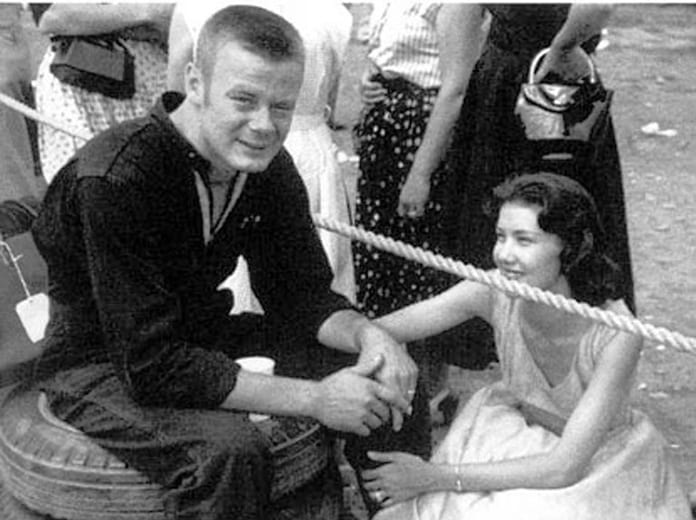Gerald Frederick “Jerry” Hoyt is, perhaps, best remembered for his unexpected run to the Indianapolis 500 pole in 1955.
Through an unusual set of circumstances, Hoyt took a car with outdated technology and gained racing’s most prestigious starting spot.
Anxious to set track records but plagued by 40-mph wind gusts that shoved their cars several feet off the racing line, a number of the top teams agreed to wait until the next day to run.
Practicing with good lap times despite the wind, Hoyt decided he wanted to get the always nerve-wrenching qualifying over with.
As he roared away, other teams desperately scrambled for a spot in line. But with barely 20 minutes of qualifying time remaining, only Tony Bettenhausen made it out. Caught by a gust of wind, Bettenhausen slowed and settled for second quick time.
Surprised at becoming the top qualifier, Hoyt insisted had he known about the agreement, he wouldn’t have run. “It was tricky out there,” he admitted.
Come race day, Hoyt was unable to capitalize on his prime starting position, however. He fell out early with an oil leak. Regardless, capturing the pole generated needed attention from owners of quality championship rides.
Born in Chicago, Hoyt grew up in Indianapolis, where his initial involvement with auto sports came as the mascot for the “Lucky Teter Auto Thrill Show.” He’d putter around the track in a miniature race car, waving an American flag as a scratchy rendition of the national anthem played.
When he graduated from high school in 1947, Hoyt moved to full-size racers, driving a midget for the first time on a tiny bullring in Russiaville, Ind. Later that year, he moved to sprint cars.
As Hoyt’s driving skills improved, he moved from outlaw sprint cars to the elite AAA circuit, where his success steered him to Indianapolis. He made his first 500 in 1950, qualifying 15th and finishing 21st.
After a stint in the Army, Hoyt didn’t return to Indianapolis until 1953.
Being out of racing for two years forced Hoyt to restart his career. In a rush to regain the lost time, he accepted Championship Trail rides that were barely competitive. Still, he capitalized on his talent to get the most from them, as a third-place finish at Milwaukee in 1953 and his gutty pole run in 1955 demonstrated.
As a result, Hoyt secured the seat in Roger Wolcott’s Offy-powered Kurtis. In addition, his good friend, 1955 500 winner Bob Sweikert, invited him to join his potent sprint car team.
While his professional life accelerated, events in his personal life moved even quicker. Within minutes of his exciting 1955 qualifying run, a friend introduced the boyishly handsome Hoyt to Indianapolis model Diane Baker.
They hit it off immediately and planned to elope, but married instead at the Broadway Baptist Church on Indy’s west side.
They spent their honeymoon chasing sprint cars. First to Dayton’s high banks, then to Gatlinburg, Tenn., where Hoyt raced with his teeth wired together. They’d been loosened by a jarring accident in the Wolcott car at Langhorne (Pa.) Speedway. At Salem (Ind.) Speedway, a wheel popped off and he ran the last lap on three wheels to finish fourth.
Oklahoma City was next where earlier that year he’d beaten Sweikert for the feature victory. His wife didn’t want him to race on July 9, however. A penicillin shot administered to fight infection in his damaged teeth left his face swollen and he was nauseous. He was leading the standings, however, and insisted on running.
He qualified well. Then, on the first lap of his heat, the car brushed the wall, tumbled into a slow roll and stopped upright. The crash didn’t appear serious. But in the rollover, the car caught the wall cockpit down. Hoyt suffered severe head injuries.
Rushed to the local hospital, he underwent three hours of brain surgery, while Diane and Sweikert waited.
Jerry Hoyt died the next morning.
Eddie Sachs drove Hoyt’s distraught bride of two weeks back to Indianapolis. It was a tragic end to a brilliant future.
